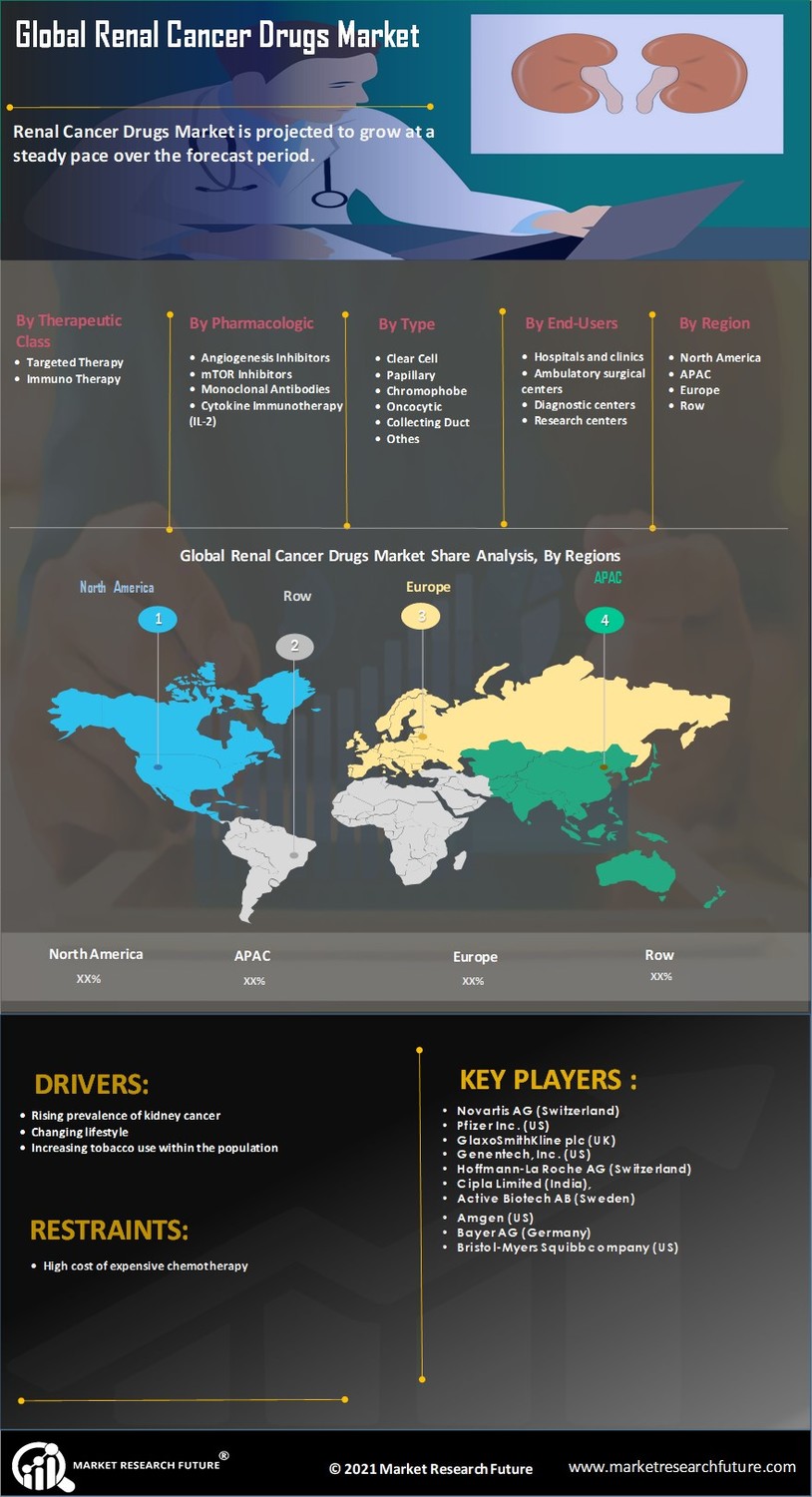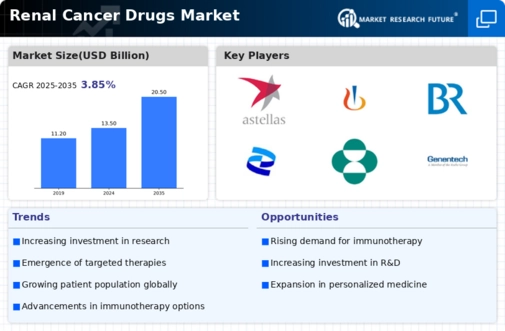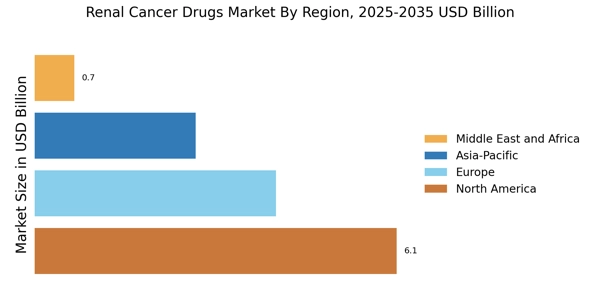Advancements in Drug Development
Technological advancements in drug development are significantly influencing the Renal Cancer Drugs Market. The introduction of novel drug delivery systems and the utilization of artificial intelligence in drug discovery have streamlined the development process. For instance, the advent of precision medicine allows for the creation of targeted therapies that are tailored to individual patient profiles. This shift towards personalized treatment options is expected to enhance therapeutic efficacy and improve patient outcomes. As a result, pharmaceutical companies are likely to allocate more resources towards research initiatives, thereby expanding the range of available renal cancer drugs and fostering market growth.
Increasing Incidence of Renal Cancer
The rising incidence of renal cancer is a primary driver for the Renal Cancer Drugs Market. According to recent statistics, renal cancer cases have been steadily increasing, with an estimated annual growth rate of approximately 2.5%. This trend is likely attributed to factors such as aging populations and lifestyle changes, which may contribute to higher cancer rates. As the number of diagnosed cases rises, the demand for effective renal cancer therapies intensifies. Pharmaceutical companies are responding by investing in research and development to create innovative treatment options. This growing patient population necessitates a robust supply of renal cancer drugs, thereby propelling the market forward.
Regulatory Support for Drug Approvals
Regulatory bodies are playing a crucial role in shaping the Renal Cancer Drugs Market through streamlined approval processes for new therapies. Initiatives aimed at expediting the review of innovative cancer treatments have been implemented, allowing for faster access to potentially life-saving drugs. For example, the introduction of breakthrough therapy designations has encouraged pharmaceutical companies to invest in renal cancer drug development. This regulatory support not only accelerates the availability of new treatments but also fosters competition among manufacturers, which may lead to more affordable options for patients. As a result, the market is likely to experience growth driven by the influx of newly approved renal cancer drugs.
Investment in Research and Development
Investment in research and development is a pivotal driver of the Renal Cancer Drugs Market. Pharmaceutical companies are increasingly recognizing the potential of renal cancer therapies, leading to substantial financial commitments towards R&D initiatives. This trend is evidenced by the rising number of clinical trials focused on renal cancer treatments, which have surged in recent years. The influx of funding is expected to yield innovative therapies that address unmet medical needs within the renal cancer patient population. As new drugs enter the market, competition will intensify, potentially leading to improved treatment options and better patient outcomes, thereby further stimulating market growth.
Growing Awareness and Screening Programs
Increased awareness of renal cancer and the implementation of screening programs are contributing to the expansion of the Renal Cancer Drugs Market. Public health campaigns aimed at educating individuals about the risk factors and symptoms of renal cancer have led to earlier detection and diagnosis. Consequently, this heightened awareness is driving demand for renal cancer treatments. Moreover, healthcare systems are increasingly adopting routine screening protocols, which further facilitates early intervention. As more patients are diagnosed at earlier stages, the need for effective renal cancer drugs is likely to rise, thereby stimulating market growth.


















Leave a Comment